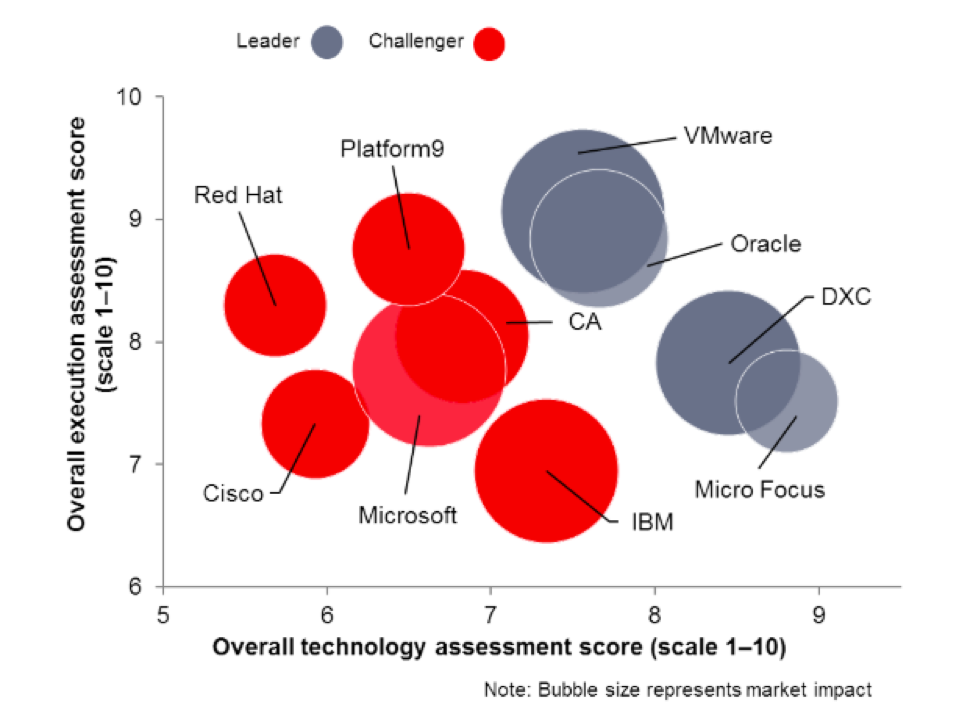
At Platform9, we work daily with some of the leading enterprises, across a wide range of industries – from Financial Services, Internet, Retail, Embedded, and more. A key question we get asked often is how enterprises can transition to becoming Cloud Native (CN) or Digitally Native (DN) businesses. The journey to becoming a truly software-driven, digital-native organizations requires enterprises to develop cultural practices and technology capabilities that support three main goals:
- Corporate IT needs to become aligned with and responsive to the lines of business and to the software delivery functions that are in charge of software and digital innovation.
- IT needs to lead the charge on fostering and enabling a culture of constant business innovation.
- The inevitable transformation in IT needs to be accompanied by a reduction in IT spend. Cloud modernization needs to not become a massive business transformation project that is bound to fail, and that is placing undue pressures on the company – both from a cost perspective, as well as processes and tooling.
Cloud Management is a key aspect that organizations are looking at in order to simplify operations, increase IT efficiency and reduce data center costs.
Given the strains that digital disruption puts on IT Ops, we often see that large and complex enterprises that have invested in Cloud Management Platform (CMP) capabilities struggle to identify the highest priority areas to target across lines of business or in shared services, and can’t really realize the promise of CMPs to optimize their IT processes across various company initiatives. The CMP implementation often becomes another ‘Moby Dick’ endless chase, sucking time and resources and causing frustration throughout the organization, with often not a lot to show for it.
In this article, I want to share our point of view and some insights into the fundamentals of Cloud Management capabilities that large enterprises need to put in place in order to support digital transformation in their organization, for both legacy infrastructure as well as new, modern applications and technologies.
Ovum Decision Matrix for Multicloud and Hybrid Cloud Management Solution
Ovum Research recently released a decision matrix report comparing the leading multi cloud and hybrid cloud management solutions. The report outlines the significance of management in a multi cloud and hybrid cloud world and the way in which it influences the way in which technology is deployed, used, and controlled. It is heartening to note that not only was Platform9 highlighted along with heavy-hitters such as VMware, Oracle, Red Hat and IBM, but that we also rank the highest in terms of execution amongst the Challengers category, where we recorded the maximum 10 out of 10 category-leading scores, with four out of the 20 available.
We are thankful to Ovum for this positive analysis on our execution capabilities and would like to take this opportunity to discuss what we see as some of the key challenges and best practices around Cloud Management. As you’ll see, we believe being a “Challenger” in the space is AWESOME — since hybrid clouds and CPMs have gotten a bad rep in recent years – and with good reason. Platform9 is here to change that, and show that there IS a way to get it right!
Legacy, Monolithic IT as a Digital Disabler
In most organizations, the process of identifying the correct set of IT capabilities needed for the various line of business projects looks something like this:
- Lines of business leadership works with product management teams on IT requests to satisfy the needs of new projects t- either in support of new business initiatives or to revamp existing offerings
- IT teams follow a structured process to identify the appropriate (silo’ed) technology elements to create the solution
- Development teams follow a mix of Agile and Waterfall development processes to stand up the solution which then gets deployed and managed by an Operations team
- Feedback from end users and on-going update requests from the business owners get slowly implemented and reflected in hte product, causing dissatisfaction with customers and possible loss of revenue or user retention.
Given this reality, how can legacy systems and architectures re-invent themselves to become Cloud Native? How can these be updated in a faster pace to benefit the business, and with better quality and reliability? And, more importantly, what does it mean from a Cloud Management standpoint?
The State of Affairs for Enterprise IT Today
Almost every customer we work with has complex and diverse infrastructure, in the service of a complex and diverse application portfolio that enterprise IT has to support. Enterprise IT has to juggle supporting many different types of applications (legacy applications, mainframe, monolithic, cloud-native apps, microservices, serverless, and more), each requiring their own technology stack and type of infrastructure, that is operated and maintained in a fundamentally different way.
Even moderately sized customers typically have large investments in VMware, are possibly exploring investments in OpenStack, Containers, and even Serverless. Most are also using the public clouds for some workloads, alongside on-premises data centers. Accordingly, one of the key challenges that customers need us to help with is Cloud Management: both private and public.
Challenges with existing CMP solutions:
Some of the key challenges we see with existing CMPs are:
- High cost – CMP technologies are typically proprietary and charge heavy license fees. Most prongs of CMP are implemented as point-products, which require considerable and lengthy investments in Professional Services and custom integrations in order to implement effectively. This typically breaks right off the bat one of the key benefits of the cloud, which is around reducing cost and increasing time to value to make provisioning and on-going management go smoother.
- Unnecessary Complexity – CMP products have evolved into offering a lot of functionality that ends up as shelf-ware. These products are over-designed and overly complex from an install, provisioning, licensing and Day-2 operations standpoint.
- Lack of Developer Engagement – Developers lead the adoption of the cloud because it is a faster way to build and ship products; especially vs legacy IT virtualization farms. Being dissatisfied with the provisioning processes and responsiveness of corporate IT, developers often turn to the public cloud on their own (“Shadow IT”, anyone?) simply to accelerate their work and enable themselves to move faster. CMP products have done a poor job catering to developers as a critical audience to facilitate digital transformation. This is mainly around:
- The user interface of common CMPs is usually off-putting to developers. Instead of self-service, on-demand experience via automation-friendly APIs, developers find that they often need to file “service request” tickets and then twiddle their thumbs while they’re stuck waiting for IT to complete the request.
- Governance controls are often poorly implemented and frustrate developers (e.g. limiting capacity usage by enforcing tickets instead of quotas)
- Developers are adopting IaaS and PaaS solutions in order to more easily build and deliver their applications. CMPs make IaaS and PaaS redundant, yet developers see them as critical to their work.
- Lack of Management for Cloud-Native Workloads and Public clouds – The majority of proprietary CMPs are mostly tailored to manage virtualization providers such as VMware. A key challenge that needs to be solved in commercial CMPs is the inclusion of support for Cloud Native workloads and public cloud management capabilities.
In my next article in this series, I’ll share the vision and key management capabilities Platform9 enables from a CMP perspective, and how these got us the accolades we received from Ovum in their recent Multicloud/Hybrid Cloud Management Decision Matrix analysis.





